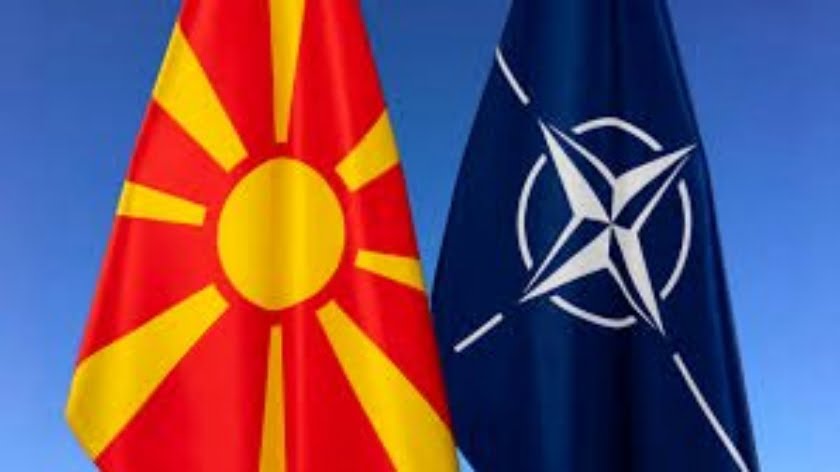Can India Offer its Neighbors an Alternative to China’s ‘One Belt, One Road’?
As China continues to develop its ‘One Belt, One Road’ Initiative (OBOR), its main competitor in the region, India, is working on its own international infrastructure projects. These are aimed at strengthening India’s influence in the region and providing an alternative to OBOR, which India does not wish to be a part of.
India is not currently able to afford a global project on the scale of OBOR, and its main goal is to set up lasting transport and economic links with its closest neighbors in South and South East Asia. However, this will require considerable effort on India’s part as China’s influence in all these countries is steadily increasing.
Among India’s significant achievements in this field, we can highlight the BBIN Motor Vehicles Agreement, known in the English-language press as the BBIN MVA. The BBIN initiative (Bangladesh, Bhutan, India and Nepal) is an agreement between its members to enable the discussion of questions that affect them all, and the adoption of joint policies. It covers matters such as cooperation on the use of water resources, electric power and transport infrastructure.
India initially intended the Motor Vehicles Agreement to include more countries. In November 2014 it proposed the Agreement at the 18th Summit of the South Asian Association for Regional Cooperation (SAARC), which includes Afghanistan, the Maldives, Pakistan and Sri Lanka, as well as the BBIN countries. However, Pakistan, India’s long-term adversary, objected to the proposal and therefore the Agreement was not adopted by SAARC. India then decided to promote the Agreement at the BBIN level.
A meeting of the BBIN Transport Ministers took place in Thimphu, the capital of Bhutan, in June 2015, where they signed the MVA. This Agreement allows motor vehicles (including cars, goods vehicles, buses etc.) from one of the member countries to enter another member country once it has obtained the necessary electronic permit and gone through border control. This is an important step forward in the ongoing process of integration between the four countries. Thanks to the BBIN MVA, goods being transported from one of the BBIN countries to another no longer need to be unloaded and then loaded onto a new vehicle at the border. This makes transporting goods both faster and cheaper. It is likely that the Agreement will make transporting both people and goods easier, and thus promote the increase of trade and development of infrastructure in the region.
In October 2017 India, together with Bangladesh and Nepal, started acting on its obligations under the Agreement. These three countries have already ratified the BBIN MVA, unlike Bhutan. While Bhutan has signed the Agreement, the MVA still lacks the support of the Bhutanese public and the national parliament has not ratified it yet. Nevertheless, Bhutan expects to ratify the Agreement, and has agreed to allow its partners to start putting the Agreement into effect without it.
India has announced that, as part of the BBIN MVA, it intends to create new bus routes between India and major cities in Nepal and Bangladesh, and also take part in road construction in the region.
In January 2018, representatives of India, Bangladesh and Nepal reached agreement on the text of a protocol to the Agreement, setting out the border crossing procedure for passenger buses and private vehicles. The final document will be signed once it has been approved by all the parties.
It has been announced that there have already been a number of trial consignments of goods along the Calcutta-Dhaka-Agartala and Delhi-Calcutta-Dhaka routes.
There is another important project that will increase India’s links with other countries in the region: the bridge that is being built over the river Feni, which forms a major part of the border between India and Bangladesh. The bridge, which is being built near Sabroom (state of Tripura, India) will link the Indian state of Tripura and Khagrachhari district in Bangladesh.
According to the Indian High Commissioner in Dhaka, Harsh Vardhan Shringla, who visited the construction site in October 2017, this bridge will become a vital link between the peoples of India and Bangladesh. Its completion will bring about a significant growth in trade and tourism between the two countries.
The bridge is scheduled to be completed in 2020. India has provided most of the funding, and construction is being managed by the Indian National Highways and Infrastructure Development Corporation (NHIDCL).
It is worth pointing out that, while these projects will clearly benefit both India and the region as a whole, they do seem very modest when compared with the Chinese OBOR initiative. As far as international infrastructure projects are concerned, it is very hard for India to compete with China, even though China’s other rivals are supporting the project. For example, the Asian Development Bank is providing technical and financial support to the BBIN MVA project. It is no secret that the leading members of that financial organization are Japan and the USA, which are supporting India in its competition with China. However, there is no news, so far, of any major Indo-American or Indo-Japanese projects that could be a serious competitor to OBOR.
Because of the long-running confrontation between India and China, the BCIM international transport corridor between Bangladesh, China, India and Myanmar, proposed by China, has been on hold for many years. The BCIM corridor could link the southern Chinese province of Yunnan with India and Myanmar, via Bangladesh.
The BCIM project, under various names, has been under discussion since the 1990s, and it is now part of the OBOR initiative. If it did materialize then trade would increase considerably throughout the South Asian region, which would bring many benefits to poorer countries in the region, such as Bangladesh and Myanmar, as well as to India and China.
However, the project has repeatedly been postponed, because of the rivalry between India and China for influence in the region. Both countries think of their neighbors Myanmar and Bangladesh as part of their own private sphere of influence, and they are not prepared to accept any interference from competitors there.
India is also unwilling to take part in OBOR. It sees this initiative as an instrument for increasing China’s influence, both in Asia and globally. However, such countries as Bangladesh, Myanmar, Nepal, the Maldives, Sri Lanka etc. have little interest in the geo-political rivalry between two powerful nations. They are more concerned with their own important problems, including the fight against poverty and social and economic development. In the rivalry between India and China, they will give their support to the party that can actually support their economies. That is why they are ready to agree to be a part of OBOR, which will promote the development of transport infrastructure and trade in the region, create more jobs, etc.
The BBIN MVA, the River Feni Bridge project, and other similar initiatives can be considered as successful moves by India to strengthen its relations with South Asian nations. But these projects are much smaller in scale than China’s ambitious OBOR. As a result, India is, as yet, unable to offer its neighbors in the region any real alternative to OBOR. To keep its influence in South Asia it may have to rethink its attitude to OBOR. It looks like India’s neighbors will take part in that initiative anyway, and it is up to India to decide whether it wants to get on board or not. If India continues to boycott OBOR without providing any real alternative to it, then it may find that it no longer has any significant role in its neighbors’ economies, and that China has taken its place. But if India starts cooperating with China, and also carries on developing its own infrastructure projects, it has the chance to join in OBOR as an important partner and hold onto its status in the region.
By Dmitry Bokarev
Source: New Eastern Outlook







